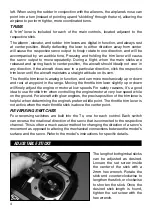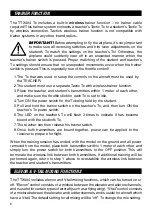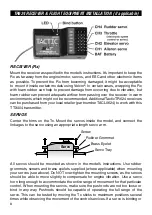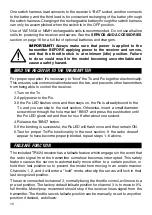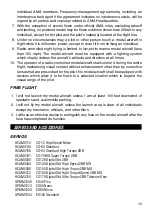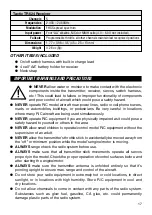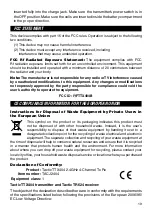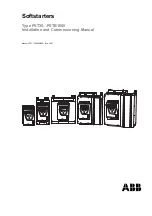
17
Tactic TR624 Receiver
Channels
6
Frequencies
2.403 – 2.480GHz
Modulation
FHSS spread spectrum
Input power
Four “AA” alkaline, NiCd or NiMH cells (4.0 – 6.0V, not included)
Failsafe
Programmable throttle, all other channels maintain last recognized positions
Dimensions
1.77
×
0.98
×
0.5" (45
×
25
×
13mm)
Weight
0.28 oz (8g)
OTHER ITEMS INCLUDED
●
On/off switch harness with built-in charge lead
●
4 cell “AA” battery holder for receiver
●
Neck strap
IMPORTANT WARNINGS AND PRECAUTIONS
●
NEVER
allow water or moisture to make contact with the electronic
components inside the transmitter, receiver, servos, switch harness,
etc.! This could lead to failure or improper functionality of components
and poor control of aircraft which could pose a safety hazard.
●
NEVER
operate R/C model aircraft near power lines, radio or cell phone towers,
roads or automobiles, buildings, or pedestrians. Be very careful in locations
where many R/C aircraft are being used simultaneously.
●
NEVER
operate R/C equipment if you are physically impaired as it could pose a
safety hazard to yourself or others in the area.
●
NEVER
allow small children to operate/control model R/C equipment without the
supervision of an adult.
●
NEVER
allow the transmitter’s throttle stick to accidentally be moved away from
the “off” or minimum position while the model’s engine/motor is moving.
●
ALWAYS
range check the radio system before use.
●
ALWAYS
make sure that all transmitter stick movements operate all servos
properly in the model. Check the proper operation of control surfaces before and
after starting the engine/motor.
●
ALWAYS
make sure the transmitter antenna is unfolded entirely so that it’s
pointing upright to ensure max. range and control of the aircraft.
●
Do not store your radio equipment in extremely hot or cold locations, in direct
sunlight, or in locations with high humidity. Store R/C equipment in cool and
dry locations.
●
Do not allow chemicals to come in contact with any parts of the radio system.
Substances such as glow fuel, gasoline, CA glue, etc. could permanently
damage plastic parts of the radio system.


